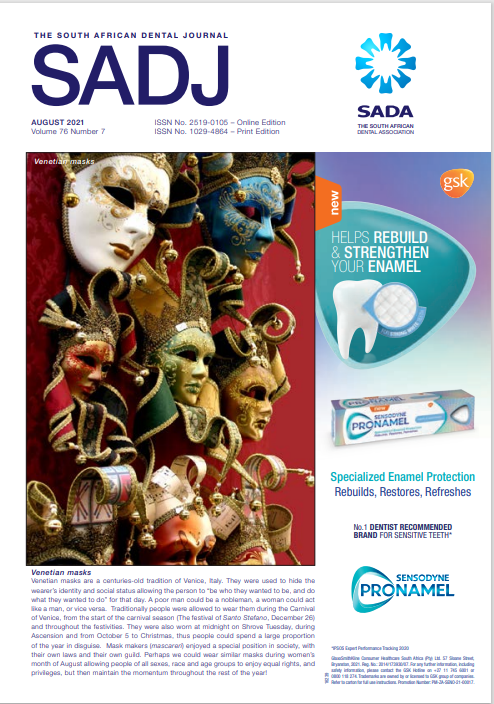Technicians and Dentists: A catch 22 situation?
DOI:
https://doi.org/10.17159/2519-0105/2021/v76no7a8Keywords:
diagnostic wax, distributive justice.Abstract
Dental technicians who regularly receive poor quality impressions and records are often faced with professional and ethical concerns as to how to handle the situation. They may choose to complete the task to the best of their abilities. Other options are to alter the casts to try to improve the situation and then complete the prescription, contact the dentist and discuss the issue, contact
the patient, contact the medical aid, report the practitioner to the HPCSA, or refuse to do the work. Their latter actions have potentially negative implications for them, and will certainly sour working relationships. At worst, they may lose the dentist’s support. This paper explores ways in which dentists and techniciains can foster collegial and mutually beneficial relationships from early on in their careers. This will not only promote better communication, and improve the quality of work produced by them, but it will also serve the best interests of their patients and the profession as a whole.
Downloads
References
Gilyoma JM, Rambau PF, Masalu N et al. Head and neck cancers: a clinic-pathological profile and management challenges in a resource-limiting setting. BMC Res Notes. 2015; 8: 772.
Davis TC, Williams MV, Marin E, Parker RM et al. Health literacy and cancer communication. A Cancer Journal for Clinicians. 2002; 52(3): 134-49.
De Sousa A. Psychological issues in oral and maxillofacial reconstructive surgery. Science Direct. 2008; 46: 661-4.
Moodley K and Naidoo S. Ethics and the dental team. Pretoria, Van Schaik publishers. 2010. 38-41.
Beauchamp TI, Childress JF. Principles of Biomedical Ethics. 5th Ed. New York: Oxford University Press. 2001.
Levine E, Degutis L, Pruzinsky T. et al. Quality of life and facial trauma: psychological and body image effects. Ann Plas Surg. 2005; 54: 502-10.
Reed J, Robathan M, Hockenhull M, et al. Children’s attitudes towards interacting with peers with different craniofacial anomalies. Cleft Palate Craniofac J. 1999; 36: 441-7.
Constitution of the World Health Organization. In: World Health Organization: Basic documents. 45th ed. Geneva: World Health
Organization. 2005.
Sartorius N. The meanings of health and its promotion. Croat Med J. 2006; 57(4): 662-4.
Twigg JA, Anderson JM, Huphris G, et al. Best practice in reducing the suicide risk in head and neck cancer patients: a structured review. British Journal of Oral and Maxillofacial Surgery. 2020; 58: e6-e15.
Downloads
Published
How to Cite
Issue
Section
License

This work is licensed under a Creative Commons Attribution-NonCommercial 4.0 International License.





.png)